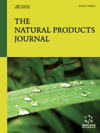
Full text loading...
We use cookies to track usage and preferences.I Understand

Alternative medicine is a term encompassing several approaches proposed for their healing effects instead of conventional medicine. The present narrative review aimed at exploring the possible use of some popular alternative treatments to manage anxiety and depression, with a specific focus on Bach flowers, lavender oil, and Hypericum which are among the most popular alternative remedies in Italy.
A thorough search was conducted across electronic databases, such as PubMed, Google Scholar, and PsycINFO for English-written papers published in peer-reviewed journals, available in full-text or abstract. The primary keywords included “Alternative medicine”, “Anxiety”, “Depression”, “Bach Flowers”, “Lavender Oil”, and “Hypericum”. Studies were included if they met the following criteria: focus on the Bach flowers, lavender oil, or hypericum, in the treatment or management of anxiety and depression.
The scientific evidence supporting the benefits of Bach flowers for anxiety and depression is still inconclusive, with some studies suggesting potential benefits in reducing anxiety symptoms and other showing no significant effects. Lavender oil has been explored for its potential therapeutic effects on anxiety and depression, but even in this case the overall findings remain controversial due to methodological limitations. St. John’s Wort (or Hypericum) showed some effect in mild to moderate depression, with efficacy comparable to standard antidepressants and fewer side effects, although its use requires careful cautions when prescribed with other drugs.
The overall findings of the present review would indicate that the scientific evidence about the possible usefulness of Bach flowers, lavender oil, and Hypericum is limited. If the effectiveness of Bach flowers is controversial, some potential benefits of lavender oil and Hypericum have been reported, however they need to be replicated and deepened in controlled clinical studies.

Article metrics loading...

Full text loading...
References
